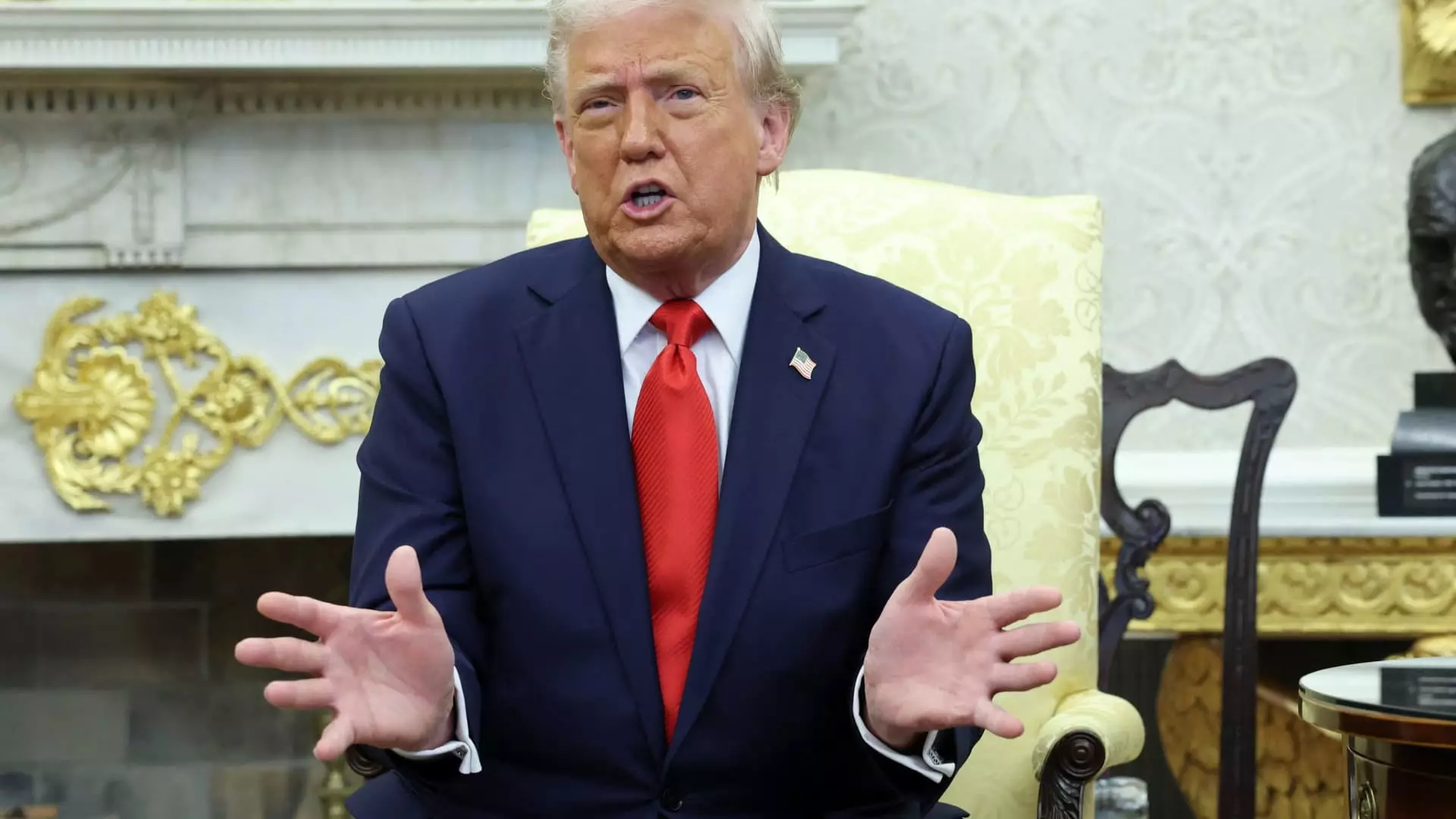In a financial landscape defined by unpredictability and extreme volatility, the opening months of Donald Trump’s presidency brought Wall Street banks an astonishing surge in stock trading. The beginning of this political era has been characterized not by stability or predictability, but rather by unease and sudden shifts, leading institutional investors to scramble for positioning. Goldman Sachs, Morgan Stanley, JPMorgan Chase, and Bank of America each recorded unprecedented revenues from equities trading in the first quarter, each raking in approximately $4 billion. When one aggregates the performances of Citigroup and Wells Fargo, it becomes clear that these six financial powerhouses collectively earned a staggering $16.3 billion in stock trading—a 33% increase from the previous year. This figure outshines previous tumultuous periods, such as the 2008 financial crisis and the COVID-19 pandemic.
While we often hear the buzzwords “spectacular” and “extraordinary” thrown around casually to describe performance results, it feels deeply ironic to witness Wall Street thriving during a time rife with economic uncertainty. The anticipated “Trump boom” for merchant bankers—a supposed boon focused on major acquisitions and high-profile initial public offerings—has come to a screeching halt. Instead, it appears the primary winners are the traders on the ground, navigating the fast flows of cash in stark contrast to the investment bankers sidelined by political indecision.
A Shift in Focus from Investment Banking
Despite the struggles that investment banking faces, the bustling activity on trading floors provides a lifeline that seems to overshadow deeper economic issues. Respected bank analyst James Shanahan noted that the volatility is unlikely to dissipate anytime soon; therefore, traders will likely remain busy. The market has turned into a complex battleground, rife with potential gains—allowing professionals to take advantage of shifts in currencies, commodities, and bonds. Morgan Stanley CEO Ted Pick encapsulated this phenomenon befittingly: there exists “a lot to play for” amid profound uncertainty.
However, while trading desks are basking in boundless profits, we should worry about the broader implications of such performance. JPMorgan executives noted that they expect unemployment to creep up to 5.8% later in the year, prompting them to set aside billions in preparation for souring loans. It becomes apparent that while Wall Street secures gains, Main Street could be on the verge of experiencing an economic downturn, creating a dichotomy that is troubling to observe. Meanwhile, smaller regional banks, lacking the massive trading operations enjoyed by their larger counterparts, face stagnation and increasing borrower defaults—a cocktail of despair for many in the financial ecosystem.
Trump’s Tumultuous Policies Fuel Market Movements
The first quarter of 2021 was markedly dramatic. The early months of Trump’s presidency revealed a complicated tapestry of tariffs, escalating trade tensions, and dizzying shifts in policy that reached fever pitch during his so-called Liberation Day. As Trump proclaimed sweeping tariffs on Canada, Mexico, and other economic rivals, financial markets experienced unprecedented volatility. In early April, we witnessed historic fluctuations, showcasing that the market does not merely respond; it anticipates and reacts to political maneuvers in real time.
Goldman Sachs’ David Solomon pointedly remarked on these significant market moves, underlining the broader implications of positioning for a new trade policy—an unfortunate testament to the reality that traders thrive on chaos. With traders increasingly comfortable navigating turmoil, it raises questions about the long-term sustainability of such a boom. Are we witnessing the creation of a market environment that thrives on discord rather than stability?
The Evolution of Wall Street’s Business Model
In the wake of the 2008 financial crisis, Wall Street underwent a transformation, consolidating power within fewer, larger firms capable of absorbing severe risks. Firms like Morgan Stanley have restructured their business models to prioritize rapid execution and greater accessibility for clients. Far from gambling with the house money, they now operate as facilitators of trades—asserting that volatility presents opportunities to profit regardless of market direction.
Enhancing their appeal amid global investors, these firms boast unprecedented capabilities—leveraging newfound technology to expedite trades and offer larger credit lines. But what does this mean for the integrity of the financial system? While traders like Pick might assert their commitment to client partnerships, could the prevailing focus on activity overshadow the fundamental purpose of lending and investment?
In an era where adaptation and transformation define successful financial entities, the current Wall Street landscape poses ethical questions about its priorities and the well-being of the larger economy. The stark contrast between the wealth-seeking ways of institutional traders and the financial struggles of everyday Americans forms an unsettling narrative that must be critically examined. Would we continue to allow a select group to capitalize on instability while ordinary citizens bear the brunt of these turbulent policies? The unfolding reality prompts us to reconsider what prosperity truly means and for whom it materializes.

